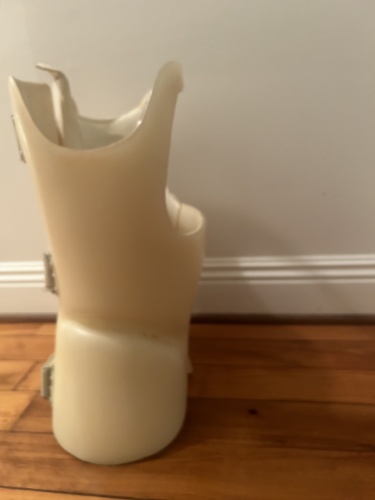June is Scoliosis Awareness Month, and we’re taking time to raise awareness about a condition that impacts millions of people—especially teens and older adults.
This is my back brace. Stylish, right? I wore it through lectures, dorm life, and all kinds of awkward seating. It taught me a lot— about posture, persistence, and what real support feels like. That experience shaped how I work with back patients today — practical, body-aware, and never one-size-fits-all.
💡 What Is Scoliosis?
Scoliosis is a sideways curvature of the spine, most commonly diagnosed during the growth spurt before puberty. It can range from mild to severe and may lead to discomfort, posture changes, or even breathing issues if left unaddressed.
There are four main types:
- Idiopathic: Most common, usually in teens
- Congenital: Present at birth
- Neuromuscular: Linked to underlying conditions like CP or MD
- Degenerative: Caused by aging or spinal changes
👀 Early Signs to Watch For
- Uneven shoulders or hips
- A rib hump when bending forward
- One side of the back more prominent
- Frequent back pain or muscle fatigue
🏃♀️ How Physical Therapy Helps
We use movement-based care to reduce pain, improve posture, interrupt the muscular cascade and prevent scoliosis from progressing. Some of the techniques we use include:
- Postural alignment and awareness training
- Core stabilization and spinal support exercises
- Breathing and rib mobility work similar to the Schroth Method
- Soft tissue work to relieve muscle tightness
🧠 Quick Facts About Scoliosis
- Affects 2–3% of the population
- Most common in girls aged 10–15
- Can continue to progress into adulthood
- Early intervention = better outcomes

